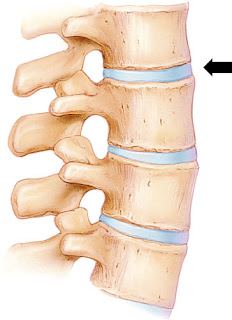
THESE WORKSHOPS ARE FREE AND OPEN TO THE PUBLIC,
LET US KNOW IF YOU NEED ACCOMMODATIONS WHEN REGISTERING.
TO SCHEDULE A WORKSHOP IN YOUR AREA
. PLEASE CALL: 1-800-759-4776
Please Feel Free to Submit a Request for a Workshop or Presentation at a Location in your City or County.
8/17/2011
10:00 am – 12:00 pm
Individual Education Program (IEP) Workshop
(Charleston)
Youth Advocate Program
4995 LaCross Road
Suite 1075
North Charleston, SC
Kim Preston, PRO-Parents of SC
South Carolina Special Kids Project
Education Coordinator
For More Information or To Register Call:
1-800-759-4776 or (803) 772-5688
8/18/2011
11:00 am – 1:00 pm
Individual Education Program (IEP) Workshop
Lexington County Public Library
(Cayce – West Columbia)
1500 Augusta Road
West Columbia, SC 29169
Tanya Inabinet, PRO-Parents of SC
Region 2, Education Coordinator
For More Information or To Register Call:
1-800-759-4776 or (803) 772-5688
8/18/2011
7:00 pm – 9:00 pm
*
Transitioning Out of Special Education Workshop
Florence County DSS Office
2685 South Irby Street
Florence, SC
Kim Preston, PRO-Parents of SC
South Carolina Special Kids Project
Education Coordinator
For More Information or To Register Call:
1-800-759-4776 or (803) 772-5688
8/25/2011
6:30 pm – 8:00 pm
*
Is Your Child a Target of Bullying? Workshop
Maryville Pentecostal Holiness Church
2014 Poplar Street
Georgetown, SC
Kim Preston, PRO-Parents of SC
South Carolina Special Kids Project
Education Coordinator
For More Information or To Register Call:
1-800-759-4776 or (803) 772-5688
8/27/2011
9:00 am – 3:00 pm
*
Linking Families with Special Education Workshop
Hampton County DSS Office
102 Ginn Altman Avenue
Suite A
Hampton, SC
Kim Preston, PRO-Parents of SC
South Carolina Special Kids Project
Education Coordinator
For More Information or To Register Call:
1-800-759-4776 or (803) 772-5688
9/08/2011
5:30 pm – 7:30 pm
*
ADD / ADHD Workshop
Bamberg County IFCCS
104 Bridge Street
Bamberg, SC
Kim Preston, PRO-Parents of SC
South Carolina Special Kids Project
Education Coordinator
For More Information or To Register Call:
1-800-759-4776 or (803) 772-5688
9/10/2011
10:00 am – 12:00 pm
*
Is Your Child a Target of Bullying? Workshop
Limestone College
2724 West Palmetto Street #8
Florence, SC
Kim Preston, PRO-Parents of SC
South Carolina Special Kids Project
Education Coordinator
For More Information or To Register Call:
1-800-759-4776 or (803) 772-5688
9/13/2011
6:00 pm – 8:00 pm
*
Individual Education Program (IEP) Workshop
Fairfield County DSS Office
136 Kincaid Bridge Road
Winnsboro, SC
Rene Sharkey, PRO-Parents of SC
South Carolina Special Kids Project
Project Coordinator
For More Information or To Register Call:
1-800-759-4776 or (803) 772-5688
9/15/2011
10:00 am – 12:00 pm
*
Is Your Child a Target of Bullying? Workshop
Dillon County DSS Office
1211 Highway 34 West
Dillon, SC
Kim Preston, PRO-Parents of SC
South Carolina Special Kids Project
Education Coordinator
For More Information or To Register Call:
1-800-759-4776 or (803) 772-5688
9/15/2011
5:00 pm – 7:00 pm
*
Section 504 of the Rehabilitation Act of 1973 Workshop
Marlboro County DSS Office
713 South Parsonage Street
Bennettsville, SC
Kim Preston, PRO-Parents of SC
South Carolina Special Kids Project
Education Coordinator
For More Information or To Register Call:
1-800-759-4776 or (803) 772-5688
9/15/2011
6:00 pm – 8:00 pm
*
Communicating With Your Child’s School and IEP Team Workshop
Mizpah Baptist Church
(Lee County DSS)
3659 Jamestown Road
Camden, SC
Rene Sharkey, PRO-Parents of SC
South Carolina Special Kids Project
Project Coordinator
For More Information or To Register Call:
1-800-759-4776 or (803) 772-5688
9/15/2011
6:30 pm – 8:30 pm
Is Your Child a Target of Bullying? Workshop
Spartanburg Regional Hospital
101 East Wood Street
(Dinning Room Cafeteria)
Spartanburg, SC
Susan Bruce, PRO-Parents of SC
Region 3, Education Coordinator
For More Information or To Register Call:
1-800-759-4776 or (803) 772-5688
9/21/2011
10:00 am – 12:00 pm
Is Your Child a Target of Bullying? Workshop
Oconee DDSN
116 South Cove Road
Seneca, SC
Susan Bruce, PRO-Parents of SC
Region 3, Education Coordinator
For More Information or To Register Call:
1-800-759-4776 or (803) 772-5688
9/22/2011
6:00 pm – 8:00 pm
*
Getting and Keeping the First Job Workshop
Williamsburg County DSS Office
831 Eastland Avenue
Kingstree, SC
Kim Preston, PRO-Parents of SC
South Carolina Special Kids Project
Education Coordinator
For More Information or To Register Call:
1-800-759-4776 or (803) 772-5688
9/26/2011
10:00 am – 12:00 pm
Transitioning Out of Special Education Workshop
Horry County DDSN Office
250 Victory Lane
Conway, SC
Kim Preston, PRO-Parents of SC
South Carolina Special Kids Project
Education Coordinator
For More Information or To Register Call:
1-800-759-4776 or (803) 772-5688
9/27/2011
6:00 pm – 7:00 pm
*
Section 504 of the Rehabilitation Act of 1973 Workshop
Richland County DSS Office
3220 Two Notch Road
Columbia, SC
Rene Sharkey, PRO-Parents of SC
South Carolina Special Kids Project
Project Coordinator
For More Information or To Register Call:
1-800-759-4776 or (803) 772-5688
10/05/2011
10:00 am – 12:00 pm
Is Your Child a Target of Bullying? Workshop
Laurens County DDSN
1860 Highway 14
Laurens, SC
Susan Bruce, PRO-Parents of SC
Region 3, Education Coordinator
For More Information or To Register Call:
1-800-759-4776 or (803) 772-5688
10/13/2011
6:30 pm – 8:30 pm
Transition Into Special Education Workshop
HITCH UP
Spartanburg Regional Hospital
Bearden – Josey Breast Center Conference Room
101 East Wood Street
Spartanburg, SC
Susan Bruce, PRO-Parents of SC
Region 3, Education Coordinator
For More Information or To Register Call:
1-800-759-4776 or (803) 772-5688
10/14/2011
10:00 am – 12:00 pm
Individual Education Program (IEP) Workshop
Pickens County DDSN
1308 Griffin Mill Road
Pickens, SC
Susan Bruce, PRO-Parents of SC
Region 3, Education Coordinator
For More Information or To Register Call:
1-800-759-4776 or (803) 772-5688
10/19/2011
10:00 am – 12:00 pm
Transition Into Special Education Workshop
Oconee DDSN
116 South Cove Road
Seneca, SC
Susan Bruce, PRO-Parents of SC
Region 3, Education Coordinator
For More Information or To Register Call:
1-800-759-4776 or (803) 772-5688
10/25/2011
6:00 pm – 8:00 pm
*
Transitioning Out of Special Education Workshop
Cherokee County DSS Office
216 Macedonia Road
Gaffney, SC
Rene Sharkey, PRO-Parents of SC
South Carolina Special Kids Project
Project Coordinator
For More Information or To Register Call:
1-800-759-4776 or (803) 772-5688
11/16/2011
10:00 am – 12:00 pm
ADD / ADHD Workshop
Oconee DDSN
116 South Cove Road
Seneca, SC
Susan Bruce, PRO-Parents of SC
Region 3, Education Coordinator
For More Information or To Register Call:
1-800-759-4776 or (803) 772-5688
12/02/2011
10:00 am – 12:00 pm
Transition Into Special Education Workshop
Pickens County DDSN
1308 Griffin Mill Road
Pickens, SC
Susan Bruce, PRO-Parents of SC
Region 3, Education Coordinator
For More Information or To Register Call:
1-800-759-4776 or (803) 772-5688
























